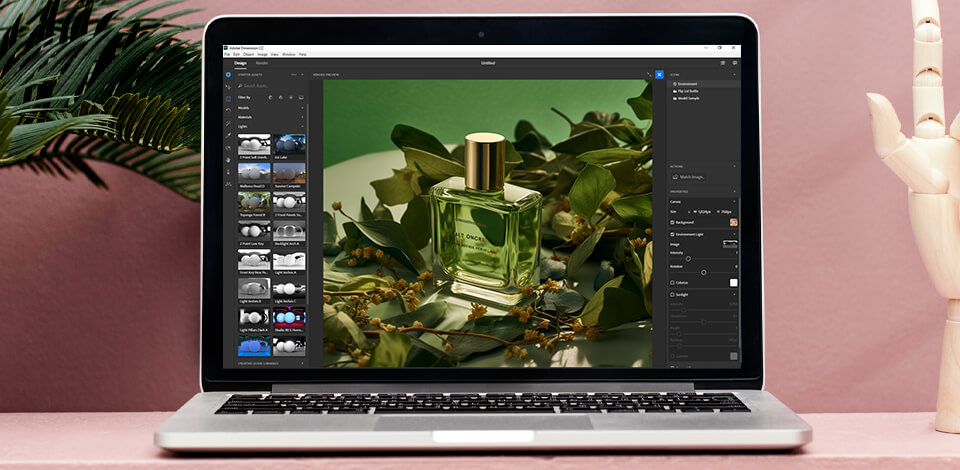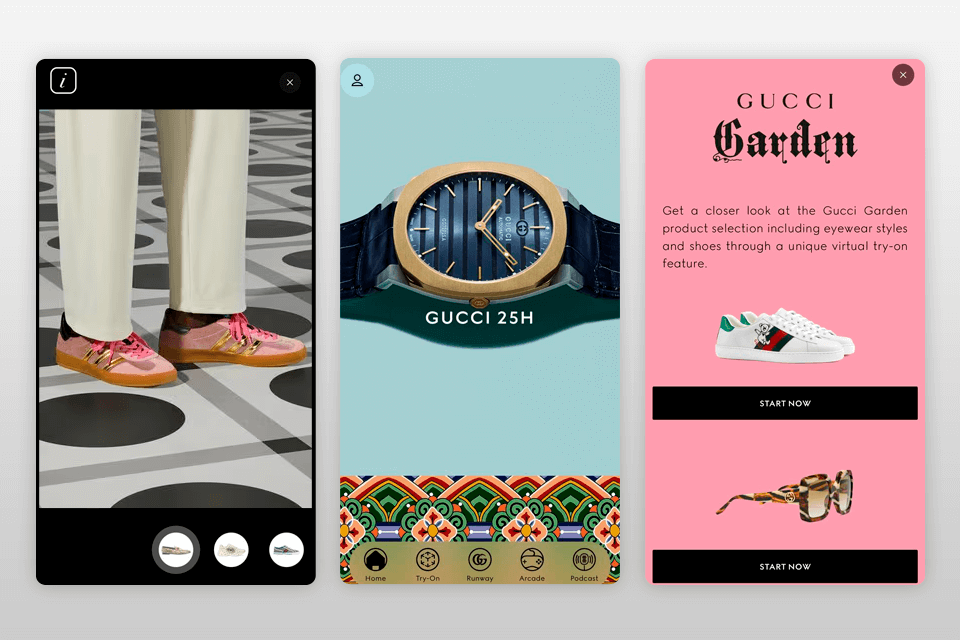
3D modeling for eСommerce helps the customer get a better idea of what the product looks like and saves from buying a pig in a poke. The better the model, the more likely people are to buy it.
As Reydar states, 66% of consumers choose a site with 3D/AR for their purchases, rather than sites that simply show pictures of the product. This is because it’s visually easier for the consumer to imagine how the object will fit into his space and life.
There is plenty of 3D modeling software on the market, so make sure to select the most suitable one for your needs. The majority of programs can run lag-free even on an average computer for 3D modeling. With careful planning and performance, using 3D models can boost your online sales.
3D product visualization is now widely used in eCommerce for enhancing product offerings and improving client experience. It brings various advantages, such as reducing return rates, increasing engagement, and so on.
Browser native. Thanks to advancements in web-based augmented reality (AR), customers can view products in 3D directly from the regular product page, eliminating the need to download a separate 360 product viewer.

Enhanced customer engagement. The 3D model allows for interacting with products in a more immersive and captivating manner, igniting greater interest and ultimately boosting sales or conversions.
Cost-effective solution. By utilizing 3D models, you can do without pro-level photographers and studios for product photography. The 3D model allows you to capture photos from any desired angle by simply rotating them.
Enhanced product personalization. Interacting with 3D models, customers can personalize the product to fully suit their needs, they can also watch these changes in real-time, which will make them more loyal and satisfied.
A site not crowded with images works faster and more efficiently. In the realm of eCommerce, fast and seamless website performance is crucial for a flawless user experience. Consumers look for swift page loading across different devices. As an eCommerce platform owner, you should care about your website’s speed and overall performance.

Elevated brand reputation. Incorporating 3D models showcases a dedication to innovative and tech solutions, thereby bolstering a brand’s reputation among clients and strengthening positions among competitors.
Heightened customer trust. 3D eСommerce visualizations aid in fostering customer confidence in their purchasing decisions by offering detailed and accurate depictions of products.
Iterative design and feedback. 3D visualization facilitates the iterative design process. Designers can create virtual prototypes, make modifications based on feedback, and quickly visualize the updated version. This iterative approach streamlines the design process, accelerates product development, and ensures that the final product meets the desired specifications.
Compatibility with various eCommerce platforms. CG artists save their 3D renders in common formats, eliminating the need for extra optimization on eCommerce platforms. Professional AR models are typically in USDZ and GLB formats, seamlessly integrating with any furniture shopping app. Similarly, 360° models and 3D animations are exported in common formats, effortlessly integrating into any website page.

Contrary to 2D images with fixed camera angles that are often displayed on a plain white background, a dedicated eCommerce 3D model, when viewed by a specialized viewer, elevates the shopping experience and makes it more engaging. These 3D model viewers allow shoppers for interacting with a 360-degree perspective of the product, thoroughly examining items, and eliminating any uncertainties before making a purchase.
However, it’s important not to confuse such 3D models with 360° images, as their definitions can sometimes be mistaken. 360 images refer to single or multi-row spin photography, enabling consumers to explore products from all desired angles that remain static.
On the other hand, 3D models created using specialized tools like Substance 3D Modeler offer a significantly more immersive user experience, as they provide an unrestricted exploration of the products.
The uses of AR in eCommerce and retail are numerous. Customers can now use their mobile phones to virtually try on clothing or shoes.
They can project furniture into virtual space to see how it fits and if it suits their home. Even conventional stores utilize AR to help shoppers compare prices or learn more about products on the shelves.
Furthermore, AR shopping apps empower customers to be both consumers and creators of content. They provide users with the ability to personally interact, customize, and personalize products both online and offline. Consumers can adjust colors, sizes, styles, and designs wherever they may be.

AR delivers an immersive product experience, from rotating and scaling to exploded views, annotations, and animated moving parts. It can showcase complex objects as well as large or heavy products that would otherwise be difficult to transport.
Taking refrigerators or heavy-duty car parts as an example, AR can bring such items directly to consumers, clients, or investors, allowing them to experiment and see how they function.
Global eCommerce brands are continually seeking means to enhance their engagement with prospective customers and boost sales. Using cutting-edge technology of 3D modeling for eCommerce and augmented reality (AR) functionalities can prove to be a remarkable choice in promoting your business.
Explore the list of renowned brands that have already embraced these technologies with the assistance of 3D modeling companies.

One of the pioneering companies to incorporate 3D and AR technology into their marketing approach is IKEA. As early as 2017, IKEA launched its AR application named IKEA Place. This innovative app enables customers to virtually position accurately scaled 3D models within their homes before making a purchase.
The integration of this app into their marketing strategy yielded notable outcomes for IKEA. The company witnessed a significant 43% surge in online sales. What’s more, in 2019, their global annual revenue reached a remarkable $40 billion, with a portion of this achievement attributed to the amplified online sales facilitated by the app.

In 2013, Nike embarked on a test by integrating 3D printing technologies into the production of footwear. Over time, this experiment proved its effectiveness, allowing Nike to forge ahead and create new and inventive products.
In the fall of 2019, Nike took a step further by introducing augmented reality (AR) into the process of fitting sneakers. Through foot scanning and comprehensive measurements, accomplished via their app, users can effortlessly filter through suitable shoe sizes and freely choose their preferred styles and colors, eliminating concerns about proper fit.
Presently, Nike incorporates both AR and 3D eCommerce models as part of its marketing approach. For instance, their Nike by You feature empowers users to personalize their beloved sneakers and share them on social media platforms. By leveraging the capabilities of AR & 3D innovations, Nike has successfully increased their conversion rate by a notable 11%.

Levi’s presented in-store customization as early as 2015, offering their customers the opportunity to personally design their own jeans, t-shirts, and even tote bags through an online platform.
Through Levi’s 3D catalog, users have the flexibility to examine each item from various angles and make unlimited modifications and revisions according to their preferences. Nearly every detail is available for customization. Take jeans, for instance, customers can not only select the color, overdye, and pattern, but also incorporate a distressed or worn effect.
As a result of these initiatives, Levi’s has witnessed a remarkable increase in revenue, surpassing $5.8 billion in the past year. This achievement can be attributed, in part, to the utilization of 3D and VR/AR technologies.

Bumbleride, an eco-friendly stroller retailer, has embraced the use of 3D product visualization as part of its marketing strategy to showcase its products. They have employed 3D and AR technologies to provide clients with a visual representation of the strollers’ size and fit within their homes.
Implementing 3D models in their eCommerce approach yielded significant results for Bumbleride. The conversion rates for strollers experienced a noteworthy increase of 33%, while the average duration of visitors to the brand’s online store saw a substantial boost of 21%.

Gucci has introduced a unique app that allows their customers to virtually “try on” shoes, providing them with an authentic representation of how the shoes would look when worn. It’s worth mentioning that Gucci was the pioneer among luxury brands to incorporate augmented reality (AR) into their social media campaigns, and their success has influenced other brands to follow suit.
In 2022, Gucci recorded revenue of €10.49 billion, showcasing significant growth compared to €9.73 billion in 2021 and €7.44 billion in 2020. The brand’s director has repeatedly emphasized that innovative marketing approaches, including the utilization of 3D and AR methods, have played a crucial role in driving revenue growth.

Franklin Sports, a renowned company and top player in the batting glove industry has consistently adopted a tailored approach, dedicating its complete product line to serve individual athletes. As a result, the Franklin Sports batting glove has become a popular choice among Major League Baseball (MLB) players.
Expanding upon its personalized approach and customization, the company has extended its offerings to the retail sector, allowing individuals to design their own Franklin Sports batting glove using 3D product visualization on an online platform.
This strategic move was aimed at broadening the market for customized gloves, ultimately driving sales. With an annual revenue of $300.0M, Franklin Sports continues to thrive in the industry.

Anyone who has ever painted their home understands the daunting and time-consuming task of finding the perfect paint color. To tackle this challenge, Dulux, a renowned paint manufacturer, developed a user-friendly app called Visualization. With this app, you can effortlessly visualize your walls painted in various colors. Simply aim your device at the walls and witness the transformation firsthand!
Speaking of revenue, DuluxGroup currently generates an impressive $1.2 billion in annual revenue.
3D eCommerce models are 3D rendered products used for visualizing, enhancing engagement, and facilitating sales through augmented reality (AR), virtual reality (VR), and configuration features.
Developing 3D models for eCommerce can be a time-intensive process, especially for sophisticated designs. Crafting a detailed 3D object or environment involves considerable time investment in modeling, texturing, and animating. This can pose challenges for projects with tight schedules or limited resources.
3D design involves conceptualizing and creating a three-dimensional product design from scratch. 3D designers should sketch and design the product on a PC, and then fabricate it. Conversely, 3D modeling entails creating a three-dimensional model of an existing photo.
The global market size for 3D reconstruction technology was estimated at USD 1,088.0 million in 2021 and is projected to experience a compound annual growth rate (CAGR) of 7.1% from 2023 to 2030.
Various industries rely on 3D modeling, including consumer product development, automotive design, manufacturing of industrial equipment, architecture, design, engineering, entertainment, gaming, as well as healthcare.